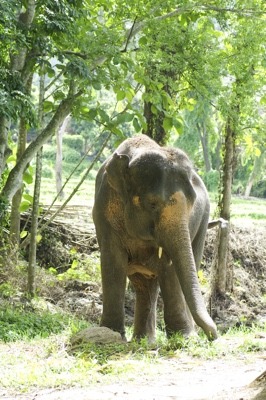
When you travel to Sri Lanka for a holiday, Sri Lanka’s Yala National Park is one of the exciting places to visit. Majority of the wildlife in the country can be found in this park. In the national park, you would find a range of animals from the large elephants to crocodiles living in the water. In this park, you would find a large population of leopards. A trip to this park with the helping of Insightguides.com would enable you to see the largest of these creatures and watch the amazing diversity of wildlife.
Trips to Sri Lanka
Taking a trip to Sri Lanka’s park will be one of your most intriguing experiences. The national park in Sri Lanka is made up of five blows. Of all five, only two are accessible to the public. These two blocks have their individual names: Ruhuna National Park and Kumana National Park. In 1990, Yala became a wildlife sanctuary where you can find the large cats in the high numbers with the elephants trotting amongst them. You would also find deer in their numbers, being careful not to annoy the larger animals. On the waters around the park, aquatic birds have made their home, feeding on small planktons that float to the water surface. Sri Lanka has become a conservative area for these animals, preventing them from going into extinction. The climatic condition in this park is usually dry and only a few places majorly find rain such as the northeast monsoon. The aquatic ecosystems present in the National park range from freshwater to marine and serve as habitat to up to 215 bird species. Tourists always marvel at the numbers and diversity of these creatures. How they have managed to find themselves a safe haven still battles some.
Major areas in Yala are rocky, so when taking a trip to part, ensure you go with a vehicle, as it will be difficult getting around without it. The earth around the park is generally flat, as there are no hills that require painful ascending and descending. The vegetation found in the forest varies widely. In the National Park, you would find various forests including dry monsoon forests, wet monsoon forests, thorn forests, and semi-deciduous forests. In the area, you would also find grasslands and plains, marshes, and sandy beaches. All these features make the scenery an amazing sight to behold. With animals walking around, Yala National Park gives you the feel of being in an old jungle, and most people tend to appreciate nature better after their adventure.
Seven of the bird species found in the National Park are widespread in Sri Lanka. About 90 species of aquatic birds breed in the environment, and most of them are migrants from other parts of the world. The park also has great pride in possessing rare bird species such as the Black-necked stork. Yala spans from Trincomalee to Hambantota. The distance from Hambantota to Yala National Park is 42 miles. There are best times to see these animals as they do not roam about all day. The bird life is best watched in the early hours of the day. By 6 am, you can leave Hambantota so you can catch the beautiful scenery. The elephants come out later in the afternoon around 3 pm. If you’re lucky, you would spot Leopards taking a majestic stroll. If passing other routes, you can either go through Tissamaharama or Kirinda with a jeep. The park is usually closed every year between the months of September and October because the animals go in search of water.
Threats faced by wildlife
Several of these animals are being threatened by poachers and fishermen. Several agricultural practices such as bush burning and encroachment have also threatened the livestock in the area. Fishermen catch crabs and turtles in traps and poacher kill some of the animals who wander too far. Several invasive plant species have begun to grow around the normal forest crops and grasslands such as Lantana camera and Chromolaena Odorata. These crops become dangerous to the normal plants found in the area.Noise and air pollution are also major problems faced by these animals. Conservation measures are been taken to keep these animals alive and preserve it as a tourist site.
You may also like this post: Family Trip to Sri Lanka.






